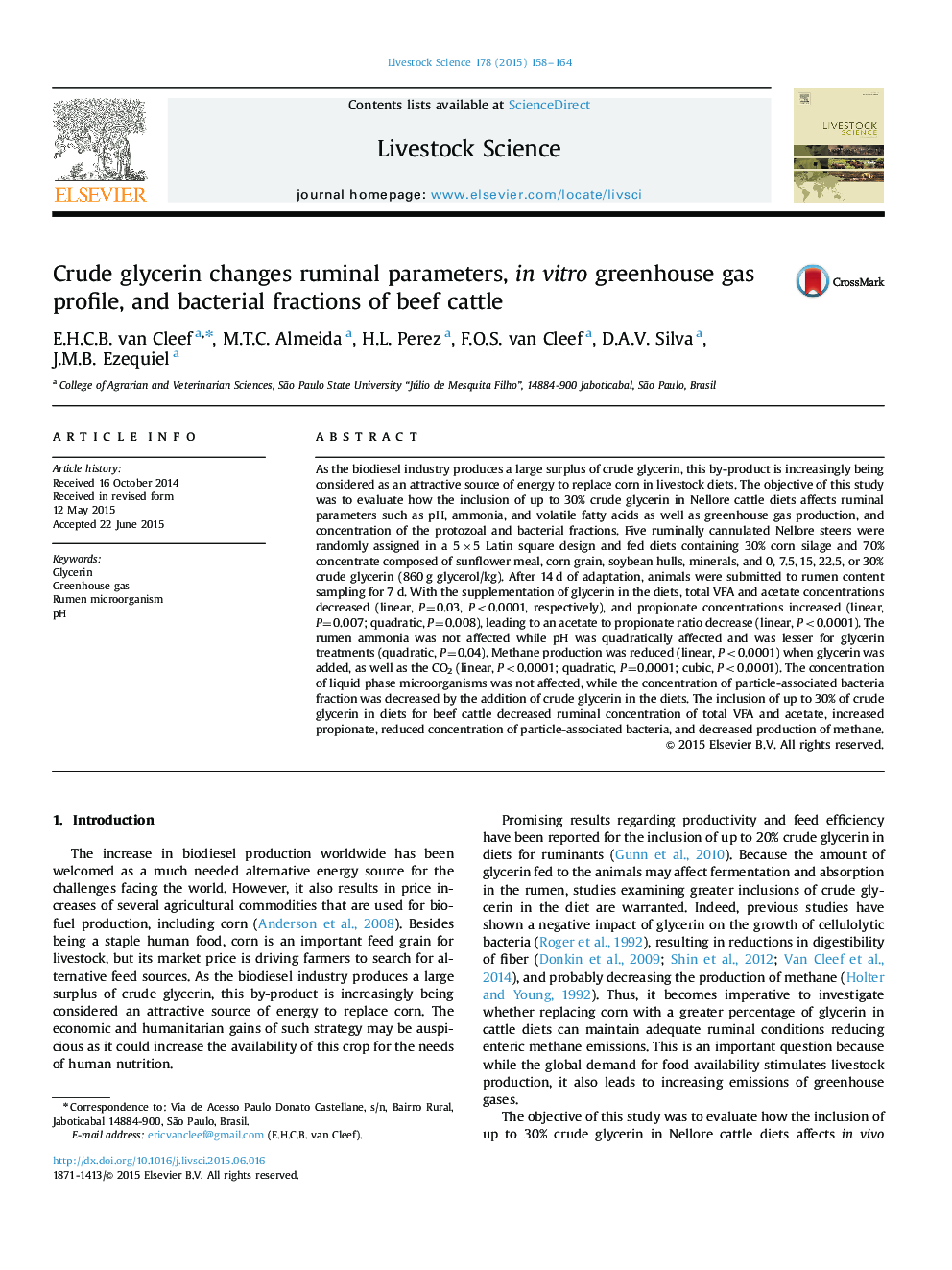| Article ID | Journal | Published Year | Pages | File Type |
|---|---|---|---|---|
| 2447072 | Livestock Science | 2015 | 7 Pages |
•Substitution of corn grain by crude glycerin is proposed.•We examine changes in the rumen environment of beef cattle.•Production of VFA and microbial mass are studied.•We report changes in VFA and microorganisms profiles.•We report it is possible to feed cattle 30% crude glycerin.
As the biodiesel industry produces a large surplus of crude glycerin, this by-product is increasingly being considered as an attractive source of energy to replace corn in livestock diets. The objective of this study was to evaluate how the inclusion of up to 30% crude glycerin in Nellore cattle diets affects ruminal parameters such as pH, ammonia, and volatile fatty acids as well as greenhouse gas production, and concentration of the protozoal and bacterial fractions. Five ruminally cannulated Nellore steers were randomly assigned in a 5×5 Latin square design and fed diets containing 30% corn silage and 70% concentrate composed of sunflower meal, corn grain, soybean hulls, minerals, and 0, 7.5, 15, 22.5, or 30% crude glycerin (860 g glycerol/kg). After 14 d of adaptation, animals were submitted to rumen content sampling for 7 d. With the supplementation of glycerin in the diets, total VFA and acetate concentrations decreased (linear, P=0.03, P<0.0001, respectively), and propionate concentrations increased (linear, P=0.007; quadratic, P=0.008), leading to an acetate to propionate ratio decrease (linear, P<0.0001). The rumen ammonia was not affected while pH was quadratically affected and was lesser for glycerin treatments (quadratic, P=0.04). Methane production was reduced (linear, P<0.0001) when glycerin was added, as well as the CO2 (linear, P<0.0001; quadratic, P=0.0001; cubic, P<0.0001). The concentration of liquid phase microorganisms was not affected, while the concentration of particle-associated bacteria fraction was decreased by the addition of crude glycerin in the diets. The inclusion of up to 30% of crude glycerin in diets for beef cattle decreased ruminal concentration of total VFA and acetate, increased propionate, reduced concentration of particle-associated bacteria, and decreased production of methane.
